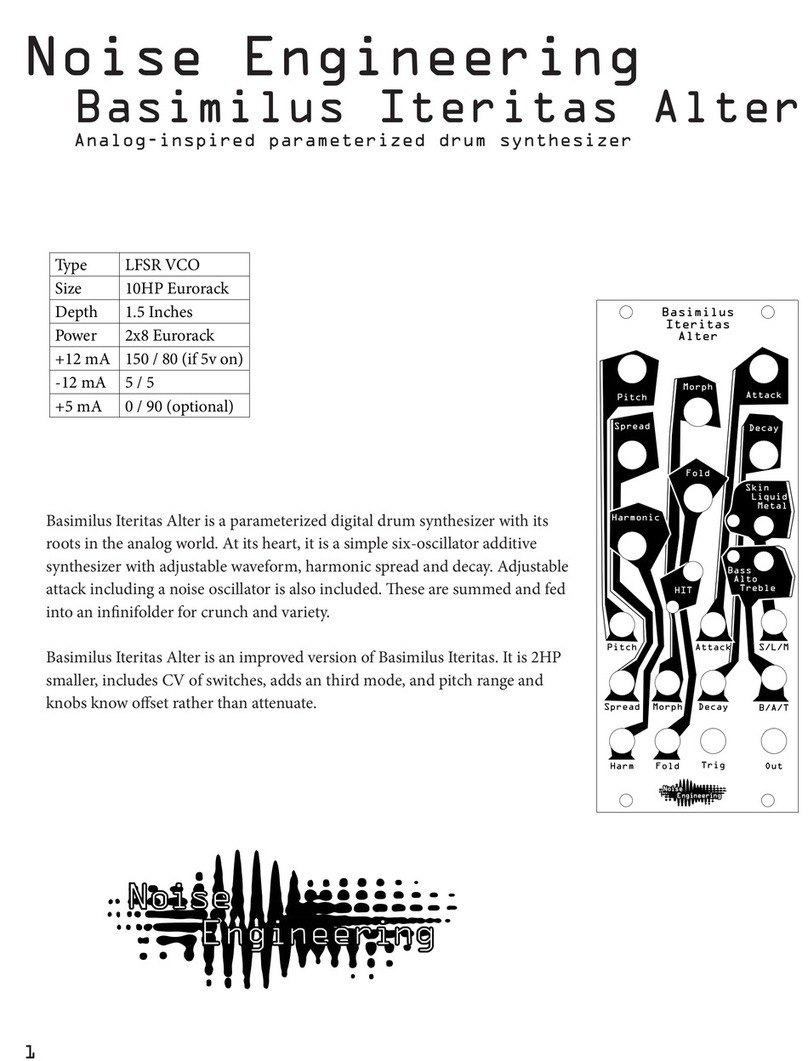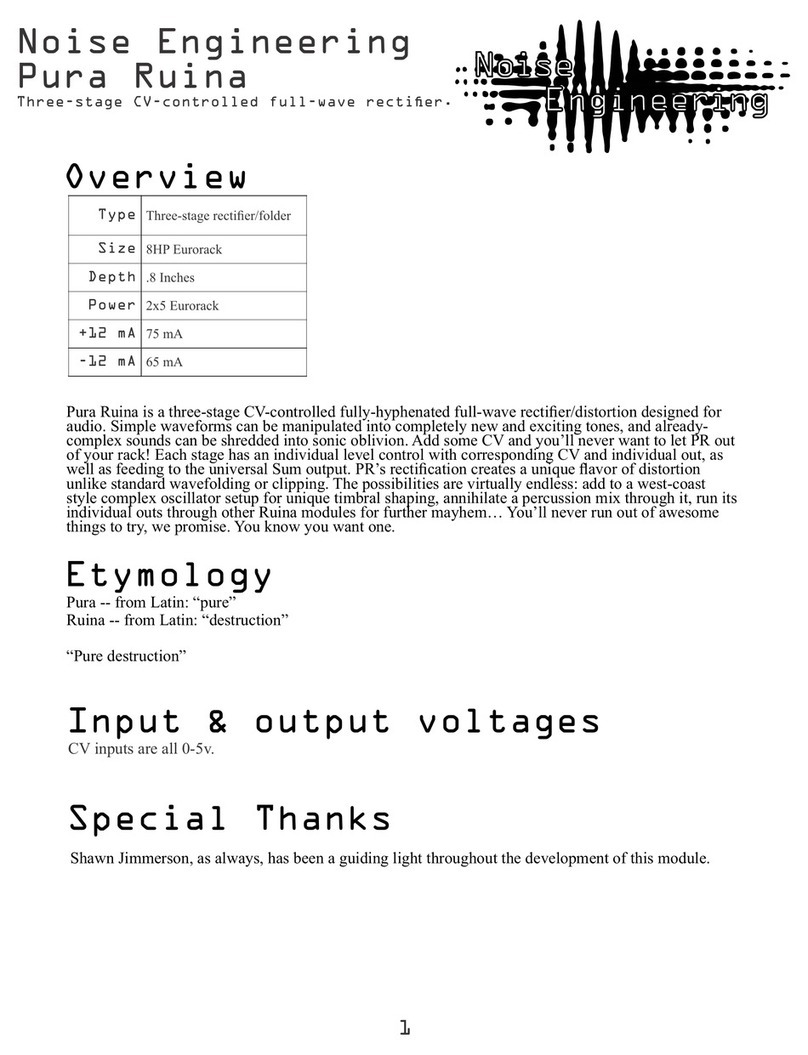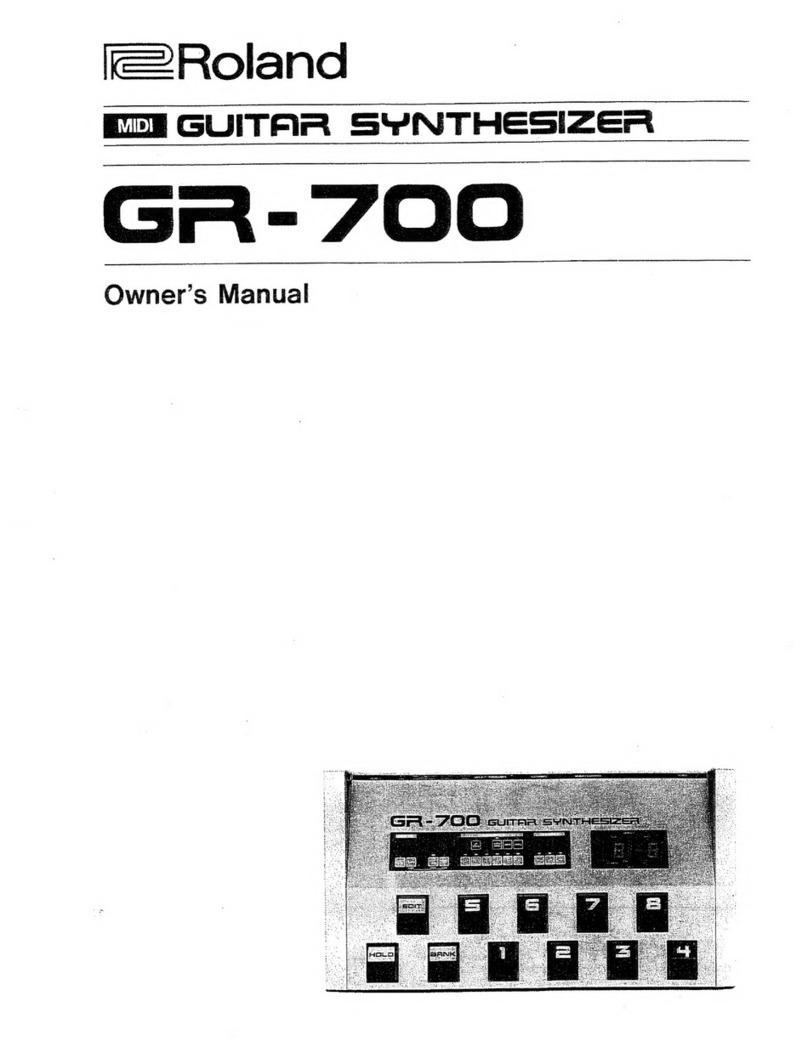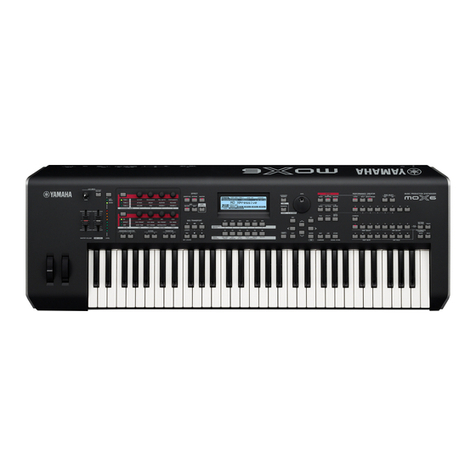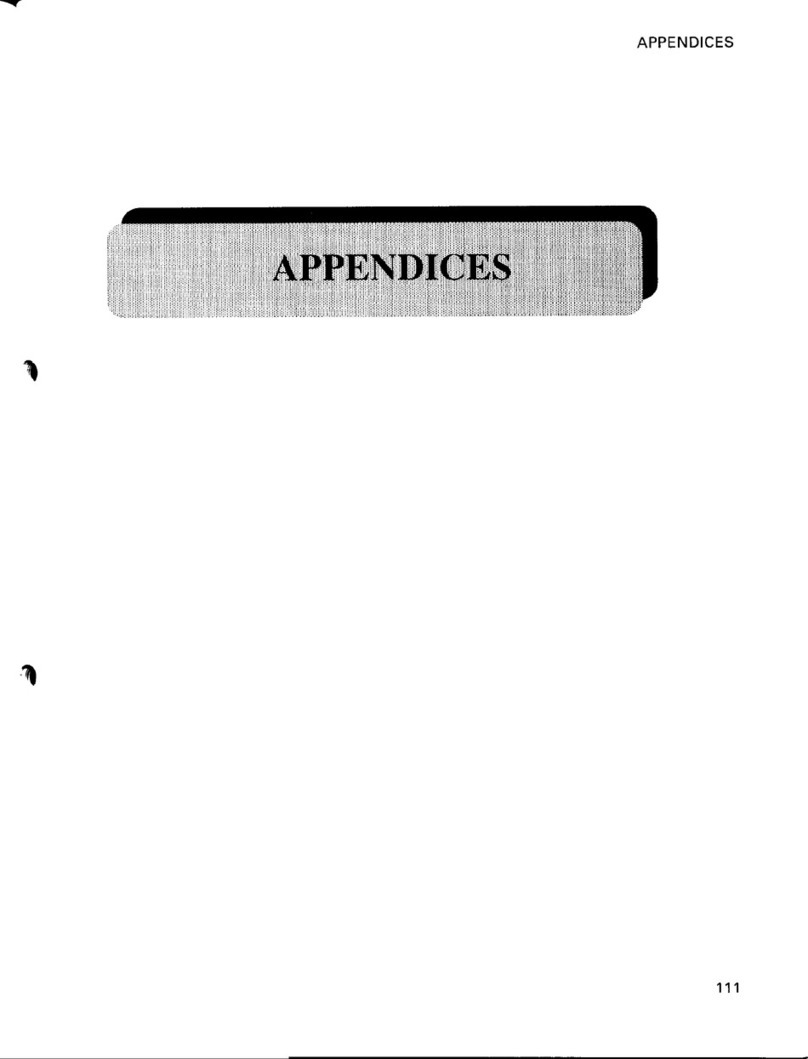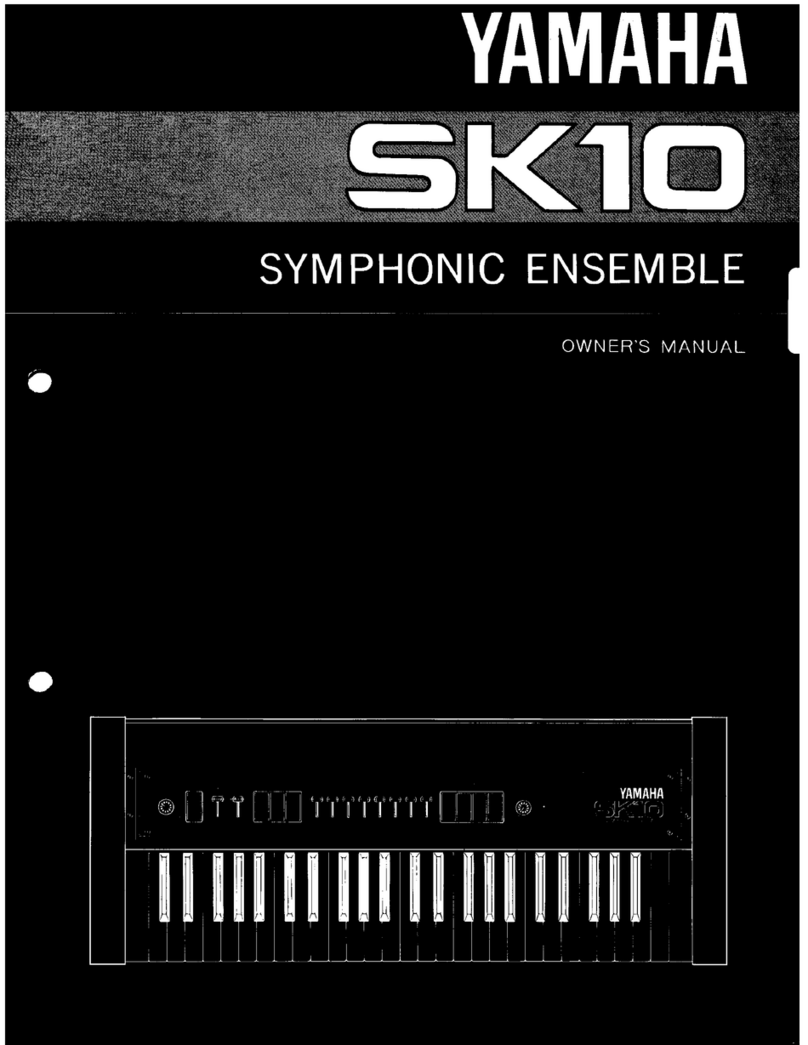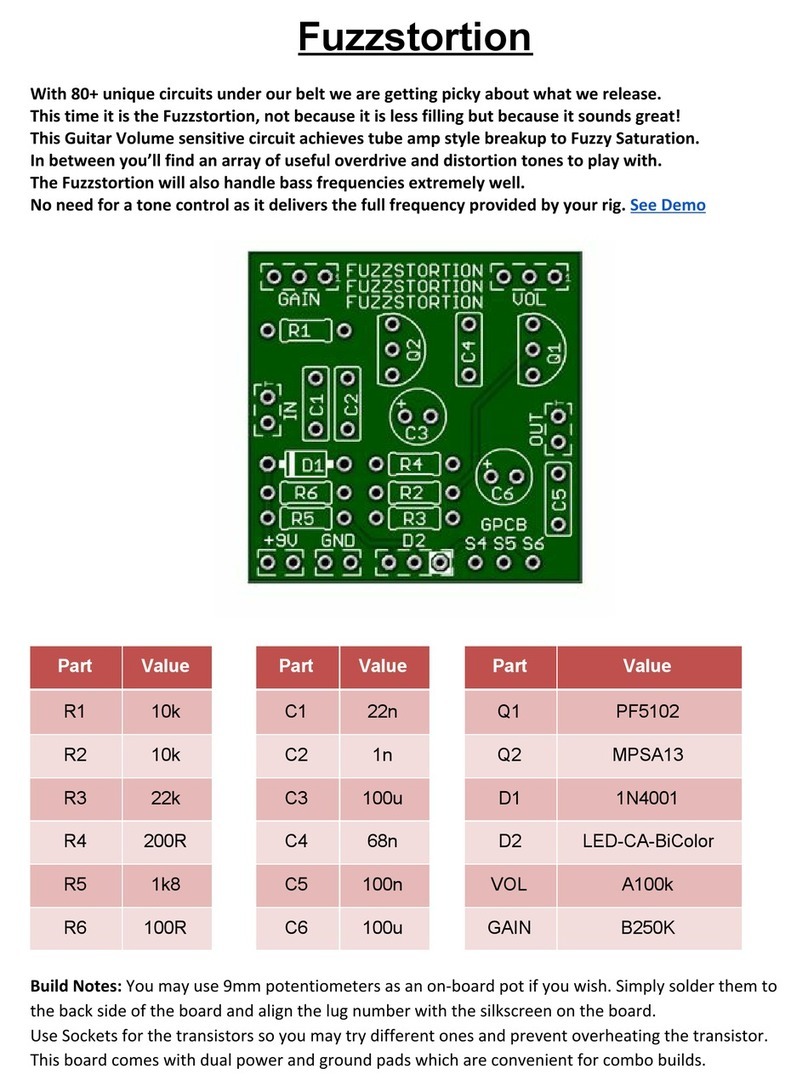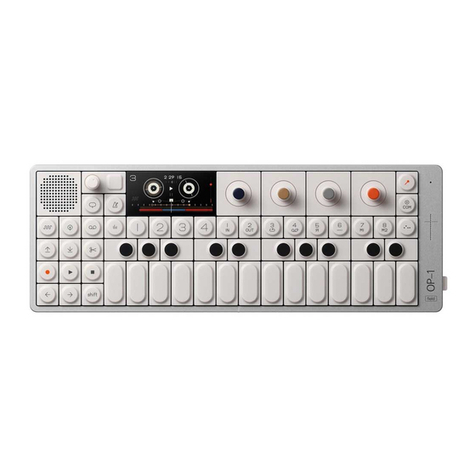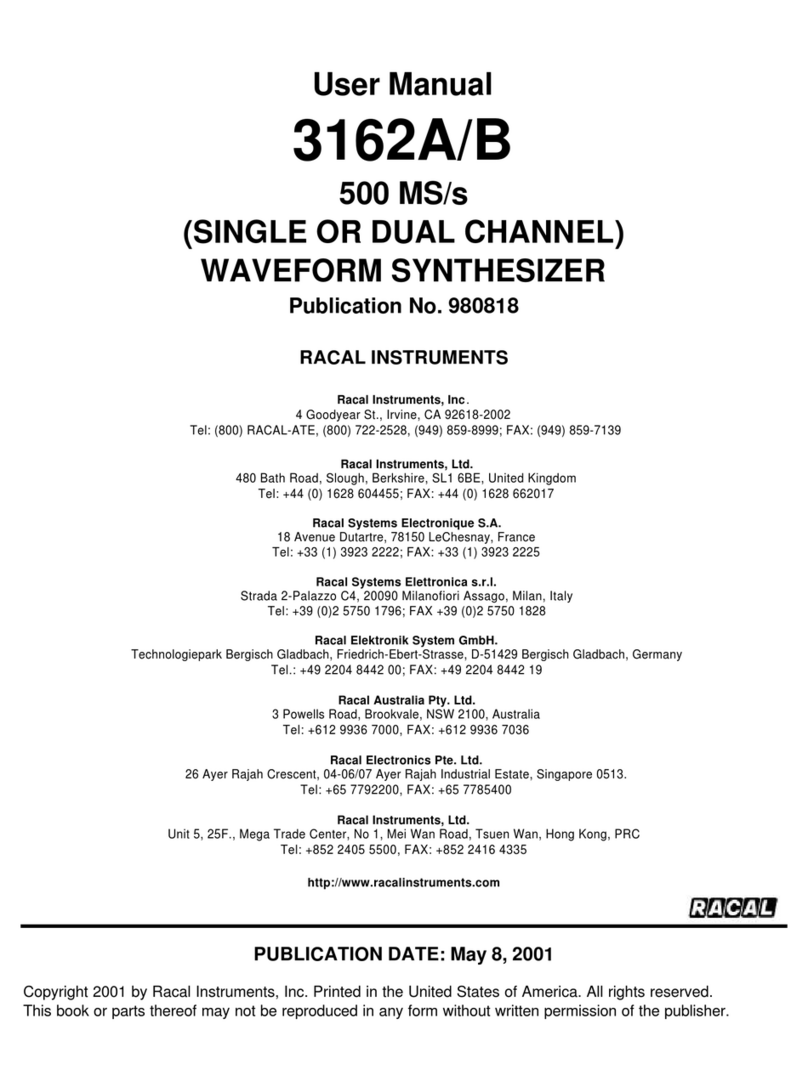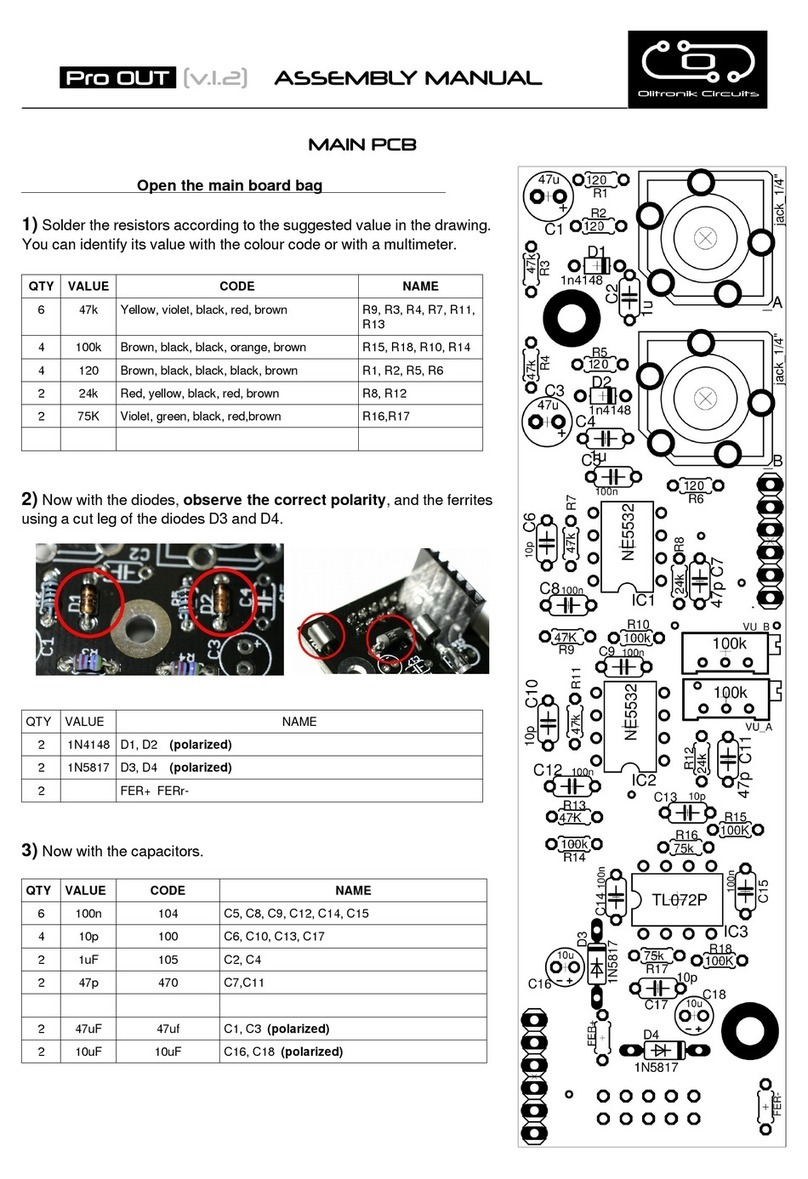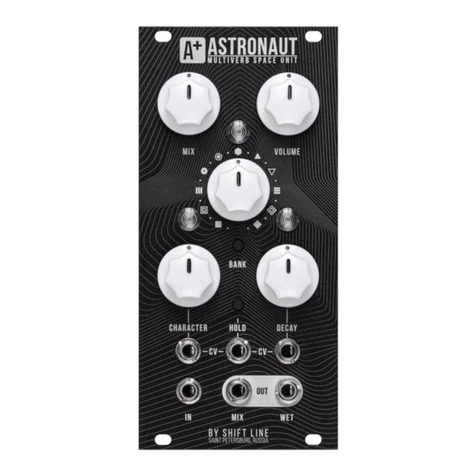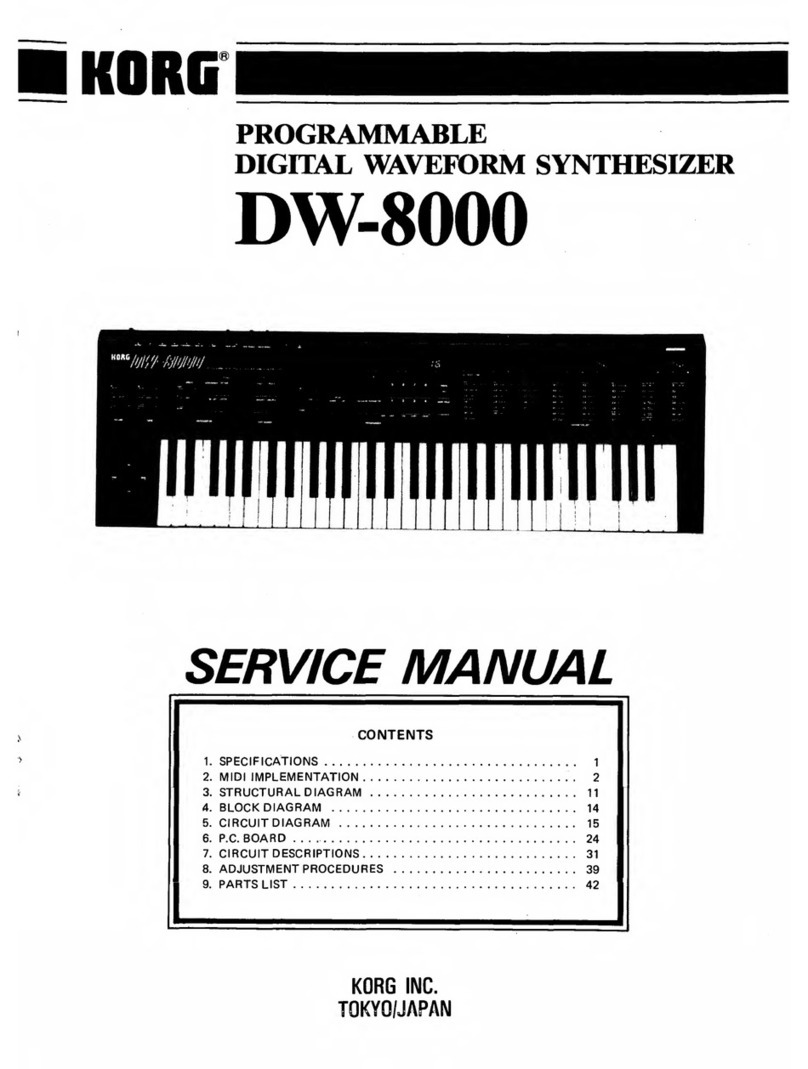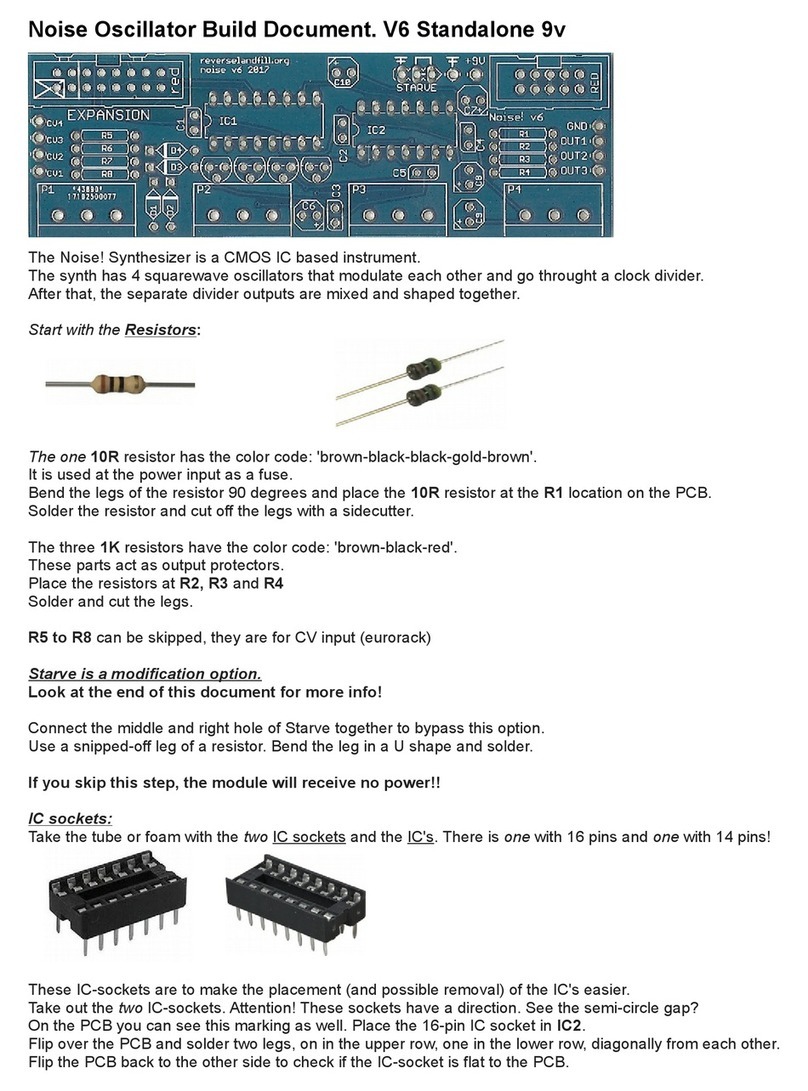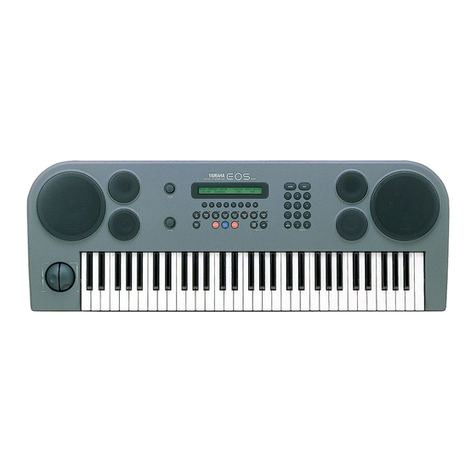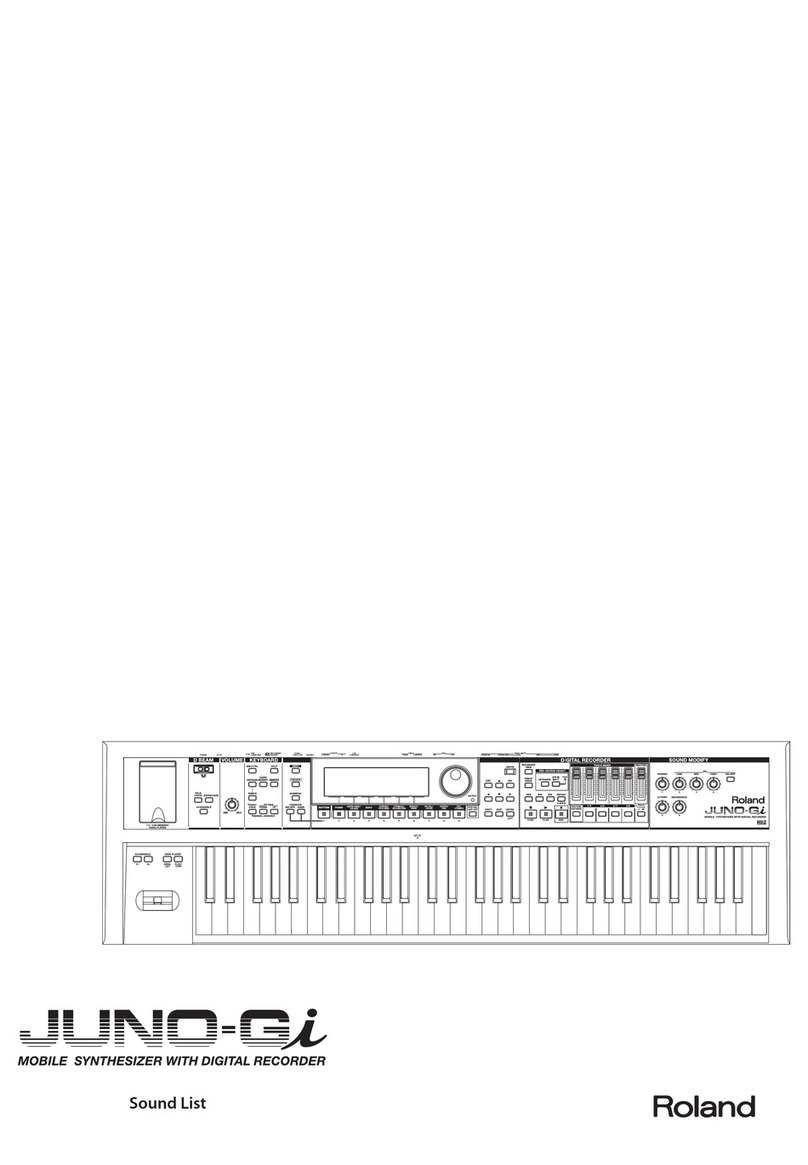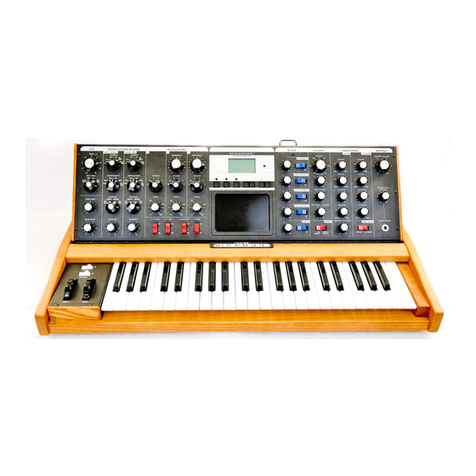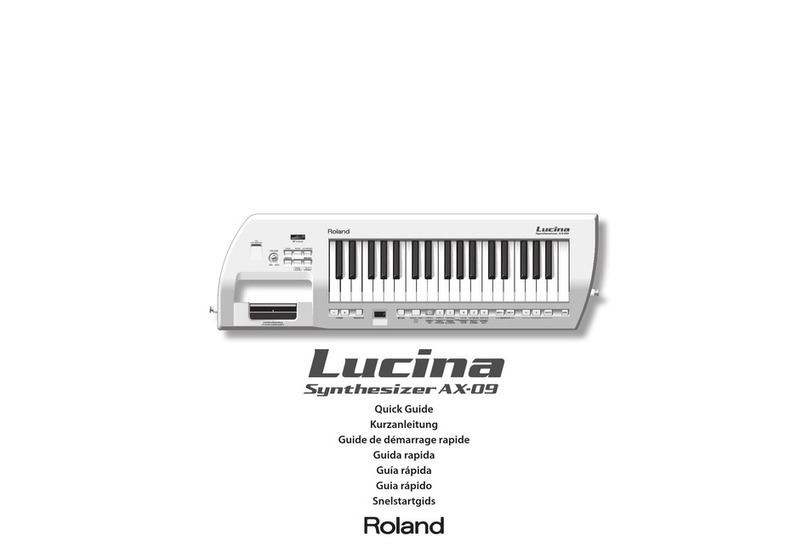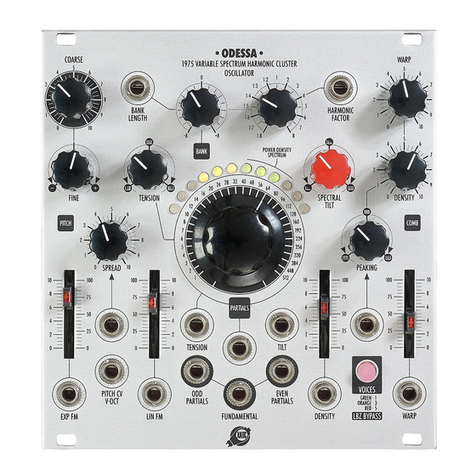Noise Engineering Lacrima Versio User manual

1
Noise Engineering
Lacrima Versio
The devil’s autowah: features an adjustable
envelope follower, variable lter t pe,
distortion, chorus, and distinctive modulation
for tone shaping.
T pe Autowah
Size 10 HP
Depth 1.5 inches
Power 2x5 Eurorack
+12 mA 70
-12 mA 70
+5 mA 0
Overview
Lacrima Versio features an envelope follower that controls a high-resonance lter.
Morph the lter between lowpass, bandpass, and highpass slopes, and Lacrima covers
all the sounds you’d expect from a typical wah – but this is not your typical wah. Route
an adjustable distortion pre, post, or pre+post lter for some saturation crunch. Add
width and motion (and just a little otherworldly tone) to your sounds with a stereo
chorus. Last but not least, use the Mod parameter to add audio-rate modulation and
octavizing to your signal. Cry your heart out with the Lacrima rmware, available free to
all Versio owners.
Et molog
Lacrima: from Latin for tears
Versio: from Latin for versatile
“Versatile tears”
Color code
On boot, the LV’s LEDs will shine with this color
pattern to indicate that it is running the current LV
rmware.

2
Power
To power your Noise Engineering module, turn o your case. Plug
one end of your ribbon cable into your power board so that the red
stripe on the ribbon cable is aligned to the side that says -12v and
each pin on the power header is plugged into the connector on the
ribbon. Make sure no pins are overhanging the connector! If they
are, unplug it and realign.
Line up the red stripe on the ribbon cable so that it matches the
white stripe and/or -12v indication on the board and plug in the
connector.
Screw your module into your case BEFORE powering on the
module. You risk bumping the module’s PCB against something
metallic and damaging it if it’s not properly secured when powered
on.
You should be good to go if you followed these instructions. Now
go make some noise!
A nal note. Some modules have other headers -- they may have
a dierent number of pins or may say NOT POWER. In general,
unless a manual tells you otherwise, DO NOT CONNECT THOSE
TO POWER.
Warrant
Noise Engineering backs all our products with a product warranty: we guarantee our
products to be free from manufacturing defects (materials or workmanship) for one year
from the date a new module is purchased from Noise Engineering or an authorized
retailer (receipt or invoice required). The cost of shipping to Noise Engineering is paid
by the user. Modules requiring warranty repair will either be repaired or replaced at
Noise Engineering's discretion. If you believe you have a product that has a defect that
is out of warranty, please contact us and we will work with you.
This warranty does not cover damage due to improper handling, storage, use, or abuse,
modications, or improper power or other voltage application.
All returns must be coordinated through Noise Engineering; returns without a Return
Authorization will be refused and returned to sender.
Please contact us for the current rate and more information for repairs for modules that
are not covered by our warranty.

Interface
Blend: Dry/wet balance control. When turned fully left, the
unmodied input signal is passed through. Fully right, only
the processed signal is heard. Points in the middle give you
a mix of both. Chorus amount is not aected by blend.
Sat: Saturation amount. Pre/Bet/Aft switch changes where
the distortion happens.
L/B/H: Smoothly morphs and blends the lter from a
lowpass to a bandpass to a highpass..
Freq: Sets the base frequency of the lter.
Q: Sets the amount of lter resonance.
Env (bipolar): Envelope-follower send amount. This
extracts the envelope from the incoming signal’s dynamics,
and routes it to the lter cuto, creating the classic “wah”
eects. This control is bipolar: at 12:00, the lter is not
aected by the envelope. To the right, the envelope will
increase the lter’s frequency. To the left, the envelope will
decrease the lter’s frequency.
Mod: Introduces audio-rate modulation, and an octavizing
eect in the top 3rd of the knob.
Hit: Triggers the envelope follower manually.
Pre/Bet/Aft: Changes where the saturation stage is placed in the signal chain.
• Pre: saturation occurs at the input.
• Bet: saturation occurs between the rst and second lters.
• Aft: saturation occurs after the lters.
0/I/II: Activates a chorus. 0 is o, I is a slow chorus, and II is a faster chorus. Chorus
amount is not aected by Blend.
Input and output voltages
All CV inputs expect 0-5 V. All pots act as osets and sum with the input CV. The FSU
gate input responds to signals above +2 V. The audio inputs clip around 16 V peak to
peak.
3

Patch Tutorial
Classic wah
Autowahs react to dynamics in signals, and change their
timbre based on volume.
1. Patch a dynamic signal like a synth line, a drum loop, or
a recording of an acoustic instrument into In 1 (and 2 if
stereo).
2. Patch Out L and R to your mixer.
3. Set Sat, Freq, Q, and Mod to minimum.
4. Set Blend to 12:00, and Env to maximum.
Try changing the Q amount to get the lter talking.
Turn up Sat and change the top switch to add in some
dierent avors of distortion.
Flip the bottom switch to the middle or right positions to add
in some chorus and widen your sound.
Self oscillation
Lacrima has enough resonance to self-oscillate. This patch
uses this capability to generate sounds from triggers.
1. Patch a trigger pattern to In L (and a second trigger pattern to R for stereo eects).
2. Patch Out L and R to your mixer.
3. Set Freq and Mod to minimum.
4. Set Q, Sat, and Env to maximum.
5. Flip the switches to the left position.
As triggers come in, they ping the envelope follower and the lter, causing a frequency
sweep and a ringing sound great for percussive eects.
Try changing the frequency of the lter and the envelope amount to tune your sounds to
the rest of your patch.
Change the Sat level and the top switch to change how harsh or gentle the resulting
tones are.
Find more patches in the upcoming Lacrima Versio patchbook.
4

Updating Firmware
Melotus Versio’s rmware can be changed to a growing
number of alternate rmwares via our rmware webapp. In
the unlikely event that the need arises, rmware patches for
Melotus will also be available on that site.
Webapp link: https://portal.noiseengineering.us/
To update the rmware on your Melotus Versio:
1. Turn o the power to your case and unscrew MV.
2. Remove the power connector on the back of MV.
3. Plug a micro USB connector suitable for data transfer
into the port on the pack of the module, and the other end
into your computer.
4. Follow the instructions in the webapp.
Design Notes
In 2019, we launched our “Distortion of the Month,” a series
of analog distortions that remain near and dear to our
hearts. We stopped at 5 modules but there were always
more (and still are) that we wanted to do. Lacrima started its
life as one of these: an analog wah that Kris dreamed up
and desperately wanted to bring to Eurorack. We discussed
features and started a schematic, but as work progressed on the Versio platform, we
realized that we could do an even cooler, more fully featured version there. We dropped
dev on the analog version and marked the letter L on our list of potential rmwares for
Versio as taken.
What those features would be, though, took some time to sort through. In the end, we
fused a few somewhat independent ideas to make Lacrima. We eventually agreed on
the wah + distortion we had originally planned in analog combined with a virtual analog
take on the Mu-Tron 3. We merged these into an envelope follower + distortion + SVF
lter structure and as we developed it further we added some features from our analog
distortion Viol Ruina (which has a similar structure) to round it o.
Lacrima Versio is a rare product that surprised even us when it was done. Stephen and
Kris both are head over heels for this one. If you love dynamics, give Lacrima Versio a
try.
Special Thanks
Eric Clapton
Jimi Hendrix
So many more, because the wah is a damn classic sound.
5
Table of contents
Other Noise Engineering Synthesizer manuals
